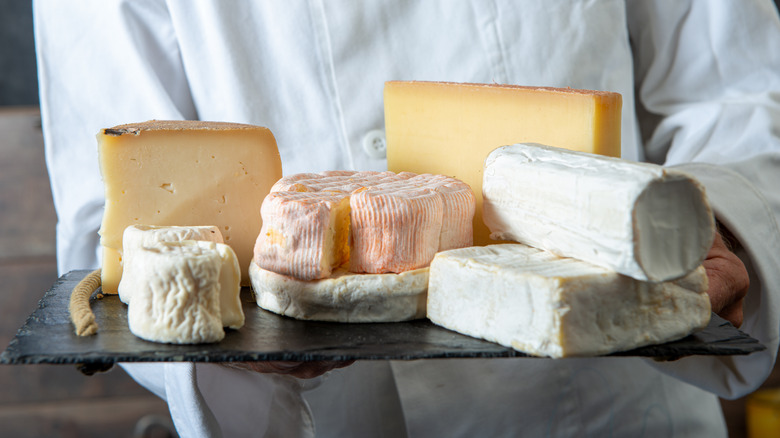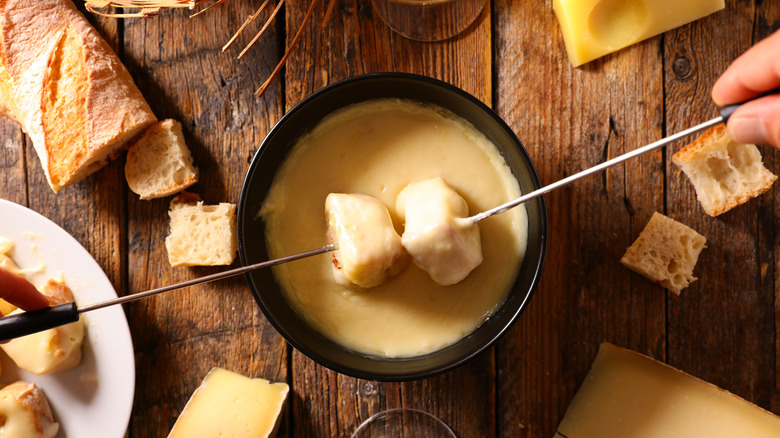The Fancy French Snack Made With Leftover Cheeses
Calling all cheese lovers! Anyone who has a passion for cheese and is knowledgeable about the subject is best described as a turophile (via Merriam-Webster). Turophiles usually don't discriminate against any type of cheese. For example, take Italy as one of the countries with the best cheese in the world.
Those who love soft cheese can indulge in the creamy burrata, scamorza, and buffalo mozzarella, made with water buffalo milk. A bit denser but still quite soft are the likes of mascarpone, Taleggio robiola, and ricotta, which are often used in desserts. Blue cheese aficionados can enjoy the two varieties of Gorgonzola, dolce and picante. In contrast, those who love hard cheeses have many options, from Grana Padano to Parmigiano Reggiano to Pecorino Romano (via Gourmet Traveller).
And if we move away to France, there's an even greater variety of extraordinary cheeses. French cheeses can usually be divided into soft, pressed, and blue cheese. Some of the most famous ones include the orange-colored Mimolette, the intense Camembert, the stinky, washed-rind Munster, and Cantal, which is similar to farmhouse Cheddar (per About-France). And that's just the tip of the iceberg because one can find more than 1000 different types of cheese in France (via Eat The Globe). If you eat a lot of cheese, you might be stuck with leftovers, but there's no need to worry. You can use those leftovers to make some fancy French snacks and reduce food waste in the process.
You can make fromage fort or Swiss fondue with leftover cheese bits
So you've made a delectable cheeseboard for your friends and family, you've all munched on the tasty cheeses and accompaniments, and now, the party's over. But what to do with all those leftover bits of cheese? If there's no mold on them, you're good to go. However, if mold's already on the cheese, beware, as it can "carry harmful bacteria, including E. coli, Listeria, Salmonella, and Brucella, all of which can cause food poisoning" (via Healthline). And if your cheese has been left outside the fridge for a bit longer than intended and it's dried out, you can still use it in different ways.
For example, Washington Post recommends using bits of leftover cheese to make classics such as fromage fort or Swiss fondue. Fromage fort means "strong cheese," and it's usually made with cream cheese, bits of old cheese without the rind, and additional ingredients such as garlic, parsley, chives, and white wine. This delicious cheese spread is chilled and typically served with crackers, toasted bread, or baked potatoes (per David Lebovitz).
A fondue is also a great option, made with a combination of melted cheese, wine, and seasonings (via Hello Switzerland). And if you need even more options, macaroni and cheese is always a viable option, while many hard cheeses can be used to make frico, the delectable and thin cheese crisp appetizer originating from the Friuli Venezia-Giulia region in Northern Italy (per MasterClass).

